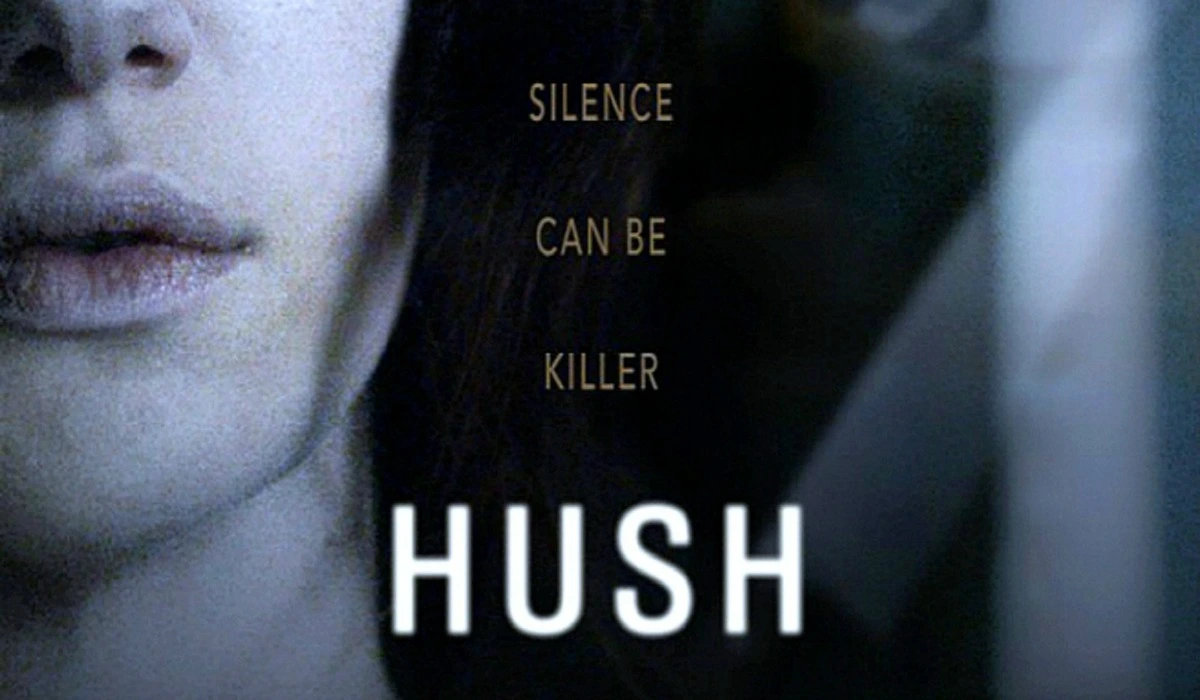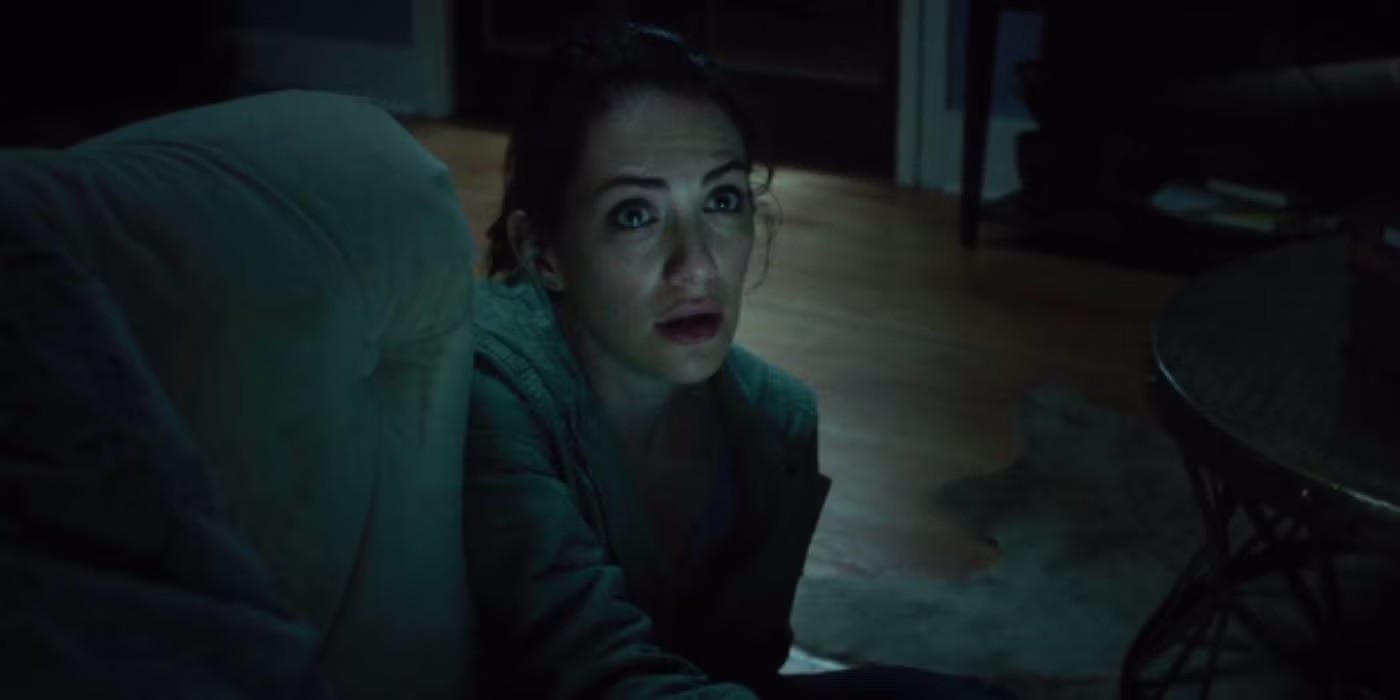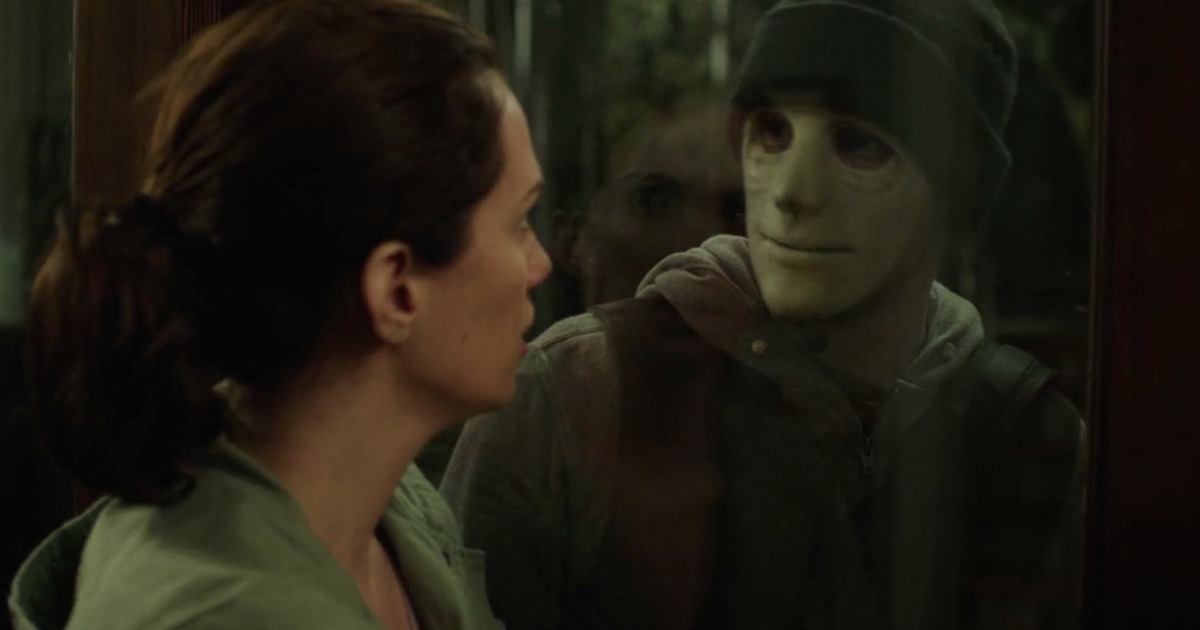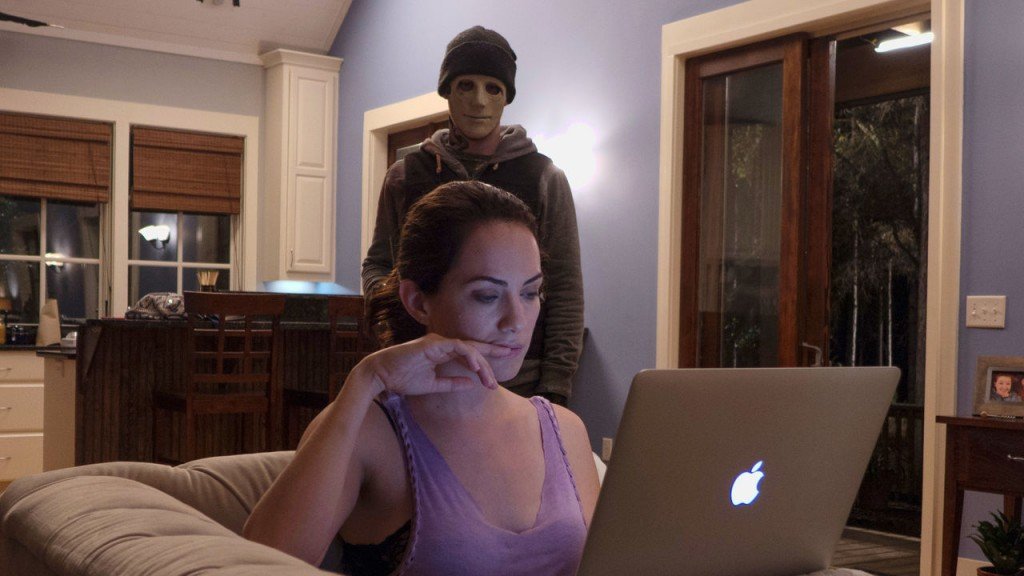Hush (2016)

Hush (2016) is a gripping and intense psychological horror-thriller directed by Mike Flanagan, who also co-wrote the screenplay alongside his wife, Kate Siegel, who also stars in the film. With a minimalist premise that turns the typical slasher genre on its head, Hush presents an edge-of-your-seat experience that explores themes of isolation, survival, and the human capacity for resilience under extreme pressure. The film features a small but talented cast, with Siegel playing the central character, Maddie Young, a deaf woman who must outwit a relentless killer while trapped in her secluded home.
The film opens with Maddie Young (Kate Siegel), a young woman living alone in a remote, wooded house. Maddie is a writer, and her home serves as both her sanctuary and her place of creativity. However, her life is complicated by the fact that she is profoundly deaf, a condition that she has learned to adapt to over the years. She uses her deafness as both a strength and a challenge in her daily life, relying on visual cues, written communication, and technology to navigate her world.
The plot of Hush begins with a seemingly ordinary evening. After an argument with her friend, Sarah (Samantha Sloyan), Maddie retreats to her home to work on her novel. However, as the night unfolds, a masked man (John Gallagher Jr.) appears at her door and begins to stalk her. What follows is a tense, high-stakes battle for survival as Maddie must rely on her wits, resourcefulness, and strength to outmaneuver the killer.
The killer, known only as the “Man” (John Gallagher Jr.), is methodical, calm, and terrifyingly efficient. He toys with Maddie at first, taunting her from outside the house and playing psychological games. He knows she cannot hear him, which makes him even more dangerous. He cuts off her access to her phone, traps her in the house, and proceeds to make her life a living nightmare. However, what the killer doesn’t know is that Maddie is no helpless victim—she is resourceful, determined, and willing to fight for her life.
As the night progresses, Maddie uses her hearing impairment to her advantage in unexpected ways, relying on visual cues and her intimate knowledge of the house to anticipate the killer’s moves. Throughout the film, Maddie faces multiple attempts on her life, each one more harrowing than the last. The tension escalates as she uses everything at her disposal—from her knowledge of her environment to her ingenuity and courage—to fight back against the killer. The film culminates in a violent and emotional confrontation between Maddie and the masked man, one that tests her limits and forces her to summon every ounce of her will to survive.
One of the primary themes of Hush is isolation. Maddie’s deafness already sets her apart from the rest of the world, and her choice to live alone in a secluded house deep in the woods further isolates her from society. This isolation is a double-edged sword: while it provides her with a certain level of autonomy and freedom, it also makes her incredibly vulnerable. Throughout the film, the remote location of Maddie’s home plays a crucial role in heightening the sense of danger. The killer knows she is alone, and this isolation intensifies the horror of the situation. The film conveys the idea that even in the comfort of one’s home, a sense of vulnerability can still exist, especially when cut off from the outside world.
Maddie’s isolation is compounded by her inability to hear. While her hearing impairment gives her unique abilities and strengths—such as a heightened sensitivity to visual details—her deafness also makes her more susceptible to certain types of threats. She cannot hear footsteps approaching, the sound of the killer’s breathing, or any external sounds that might signal danger. This inability to hear transforms what might otherwise be a typical “home invasion” scenario into a life-or-death struggle where Maddie’s resourcefulness and courage are the only things standing between her and certain death.
The film emphasizes the themes of survival and resilience, with Maddie representing the ultimate survivor. Hush showcases her fight for her life, but more importantly, it illustrates her growth as a person as she confronts her deepest fears. Despite the overwhelming odds, Maddie never gives up; instead, she adapts, learns, and perseveres in the face of extreme danger. Her deafness, initially seen as a vulnerability, becomes a source of strength as she uses her other senses and knowledge of her environment to outwit her attacker.
The theme of survival is further explored through the “Man’s” character. While he is ruthless and methodical in his approach, his actions are also dictated by a need to assert control. The killer, who enjoys toying with his victims, is eventually undone by Maddie’s persistence and her refusal to succumb to fear. Hush draws a contrast between the predatory instincts of the killer and Maddie’s raw determination to protect herself. In the end, it is her will to survive—combined with her intelligence, courage, and tenacity—that makes her the more dangerous of the two.

Maddie’s character arc is one of empowerment. Early in the film, she is shown to be a woman living in relative peace, albeit with a sense of isolation. However, once the killer arrives, Maddie must confront not only the danger posed by the intruder but also the fear and self-doubt that naturally arise in such situations. As the story unfolds, Maddie transforms from a victim who is unsure of her ability to survive into a fighter who uses her intellect and survival instincts to outwit and overpower the killer. This shift in her character arc is empowering, as it shows that even in the face of overwhelming fear and danger, there is strength to be found within.
Maddie’s resourcefulness is evident in how she uses her environment to her advantage. She quickly adapts to the situation, using everyday objects in creative ways to defend herself. This reflects a deeper theme of empowerment: that survival is not only about physical strength, but also about emotional and psychological resilience. Maddie’s ultimate victory is not simply about outlasting the killer; it’s about reclaiming her power and refusing to let fear control her.

The contrast between sound and silence is another key thematic element in Hush. Throughout the film, Maddie’s deafness plays a pivotal role in how she perceives and interacts with the world around her. The absence of sound creates a sense of disorientation for both the viewer and the protagonist. Maddie must rely on her other senses, such as sight and touch, to process information about her environment.
In a traditional slasher or home-invasion thriller, the sounds of footsteps, breathing, or the creaking of floorboards might provide the audience with a sense of impending danger. In Hush, however, the silence amplifies the tension. Maddie’s inability to hear allows the film to explore different ways of building suspense, as the killer’s actions become more unpredictable and terrifying. The silence also symbolizes Maddie’s isolation and her ability to navigate a world that others may not understand.

Mike Flanagan’s direction in Hush is masterful, creating an atmosphere of tension and suspense that never lets up. Flanagan, known for his work on The Haunting of Hill House and Gerald’s Game, is adept at creating horror with a psychological edge, and Hush is no exception. The film is minimalistic in terms of setting and cast, which heightens the feeling of claustrophobia and vulnerability. The entire film takes place in a single location, Maddie’s house, and the simplicity of the setting makes the danger feel all the more imminent.
The cinematography by James Kniest is equally effective, using tight shots and close-ups to emphasize the emotional intensity of Maddie’s situation. The camera work is particularly effective at conveying Maddie’s point of view, using visual cues to show how she perceives the world without sound. The film’s pacing is deliberate, allowing moments of tension to build slowly before unleashing moments of terror. This slow burn technique adds to the dread, making the moments of suspense feel more heightened and intense.

Kate Siegel’s performance as Maddie is the heart of the film. Siegel, who co-wrote the screenplay with Flanagan, fully inhabits the role of the resourceful, determined woman who refuses to give up despite the odds stacked against her. Her portrayal of Maddie is nuanced, capturing both the vulnerability and strength of her character. John Gallagher Jr. is equally impressive as the “Man,” a chilling and unpredictable killer who manages to be both terrifying and strangely detached in his approach to the situation.
Hush (2016) is a masterclass in suspense and horror, blending psychological tension with physical terror in a story that is both empowering and chilling. Through the character of Maddie, the film explores themes of survival, isolation, resilience, and the power of silence in the face of terror. The film’s minimalist approach, both in terms of its setting and its cast, makes the situation feel all the more intense, while Flanagan’s direction ensures that every moment is dripping with tension. Hush is a reminder of the power of the human spirit, showing that even in the darkest of moments, a person’s strength and resourcefulness can be enough to overcome the greatest of dangers.











